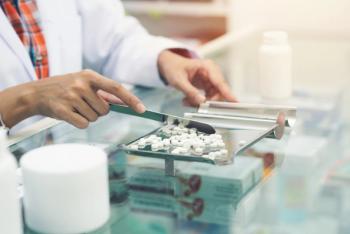
Bedside bar-coding still lagging in hospitals
Despite a new Food & Drug Administration mandate, which wentinto effect April 26 requiring all drugs supplied to hospitals tobe bar-coded, less than 10% of U.S. hospitals have a bedsidebar-coding system in place. Many hospital pharmacy executives saythe main reason they are not on board yet is the high cost ofimplementing it.
Despite a new Food & Drug Administration mandate, which went into effect April 26 requiring all drugs supplied to hospitals to be bar-coded, less than 10% of U.S. hospitals have a bedside bar-coding system in place. Many hospital pharmacy executives say the main reason they are not on board yet is the high cost of implementing it.
Privately, one pharmacy executive said he estimated it would cost $28 million to bring a bar-code system into his 80-hospital system. While costs are high, there was compelling evidence presented that the 560 hospitals now using some type of bedside bar-coding system were dramatically reducing medication errors.
The FDA estimates that requiring drugmakers and distributors to put a bar code on patient doses for all drugs sold to hospitals could result in 50% fewer medication errors and save $93 billion over a 20-year period.
DeLynn Peltz, director of clinical systems and informatics at the John Muir Medical Center in Walnut Creek, Calif., said that setting up a bar-coding system at its three hospitals was part of a $42-million budget spent for patient safety. About 25,000 doses are administered a week at John Muir, which has armed its nurses with laptops and handheld personal digital assistants. An advanced pharmacy system with dispensing robot will be installed by November.
What were described as "workaround" cases, where nurses found ways to record the bar-code data without actually scanning the patients' wristbands, were addressed during the conference by several experts. Judy Smetzer, VP of ISMP, said there were cases where nurses were using copies of bar codes of the most commonly used products and scanning them at the nurse's station.
"If the technology is not ready, it frustrates the nurse," Cohen said. "Workarounds are the exception, not a wholesale problem. Without proper training, I could see why a nurse might want to bypass the system."
James P. Bagian, a physician and former astronaut, said 10,000 nurses in the Veterans Administration were surveyed about bar-coding and its importance in preventing medication errors and none wanted to go back to the old ways of dispensing medicine.
One of the key attributes in making a medication distribution system work well is having a backup plan, according to Dave Osterberger, administrative director of pharmacy services for Memorial Healthcare System, Hollywood, Fla. "We test every bar code before it goes into the system so the nurse gets the right medication," he said. "Our goal was to be able to back up individual packaging machines. We are always in backup and run our generators a couple times a week."
Memorial uses a system that packages on demand, with equipment that requires few manual interventions and has the ability to interface with other hospital system applications.
At the Erlanger Medical Center, Chattanooga, director of pharmacy Jim Lowe implemented a Siemens Pharmacy information system integrated with the PillPick robotic systems. "One big evil in pharmacy is the missing dose," he said. To overcome that problem, his robotic dispensers put all the patients' bar-coded medicine in packages, hooked on a ring. Nurses take the ring into the patient's room, and the drugs are given at the assigned times.
Newsletter
Pharmacy practice is always changing. Stay ahead of the curve with the Drug Topics newsletter and get the latest drug information, industry trends, and patient care tips.




